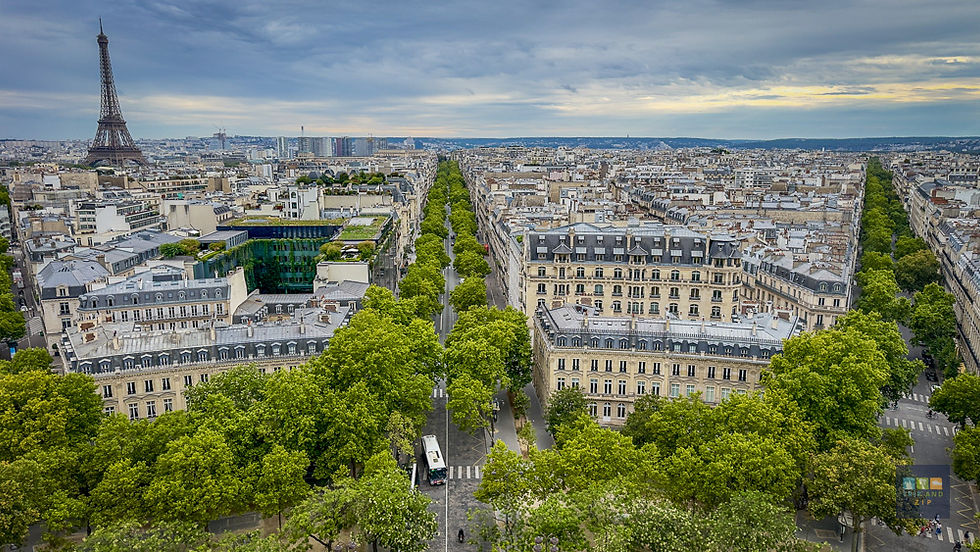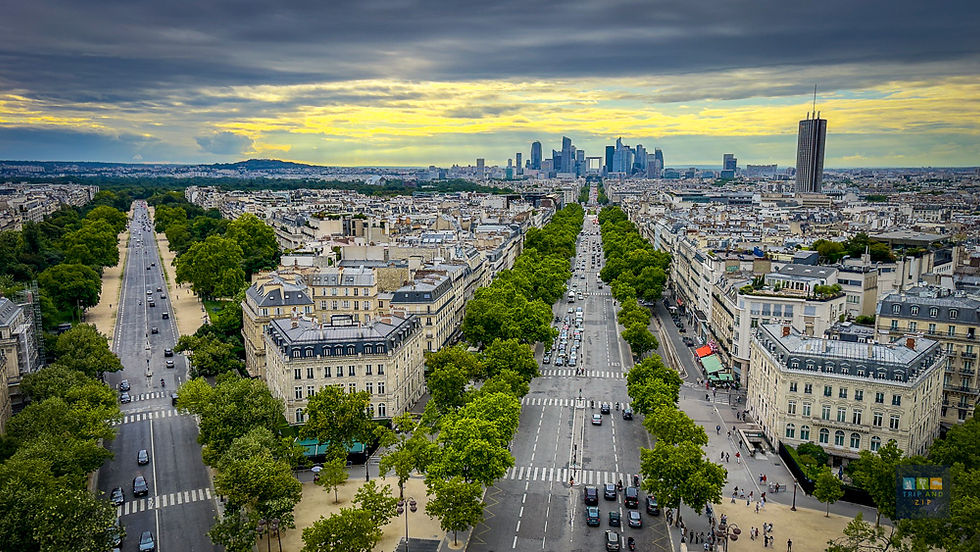Paris from the Arc de Triomphe
- Trip And Zip

- Jul 28
- 2 min read
Climbing the Arc de Triomphe at Place de l’Étoile never gets old. I’ve done it a few times now, and each visit proves the climb is worth it. Sure, the stairs may leave you a little breathless, but the effort is small compared to the reward: from the top, Paris unfolds in every direction, offering views that are nothing short of spectacular. If you’re lucky, and the light is right, then late afternoon and sunset are perfect for capturing photos that glow with Paris’ golden charm.

But the Arc de Triomphe is more than just a lookout point, it’s a monument layered with history. Commissioned by Napoleon in 1806 to honor his victories, it took decades to complete, finally opening in 1836 under King Louis-Philippe. Standing on its terrace, you feel that blend of past and present: an imperial vision turned national symbol, now framing the daily life of modern Paris.

From the top, the city becomes a living map. To the east, the Eiffel Tower rises proudly; to the north, the white domes of Sacré-Cœur crown Montmartre; to the south, the gilded dome of Les Invalides glows; and to the west, La Défense pushes the horizon with its modern skyline.
Directly beneath your feet lies the grand geometry of Place de l’Étoile, where twelve sweeping boulevards radiate like a star. Among them: the world-famous Champs-Élysées, Avenue de Wagram, Avenue Kléber, and Avenue Foch, each a showcase of Baron Haussmann’s 19th-century vision that turned Paris into a city of light, space, and order.


More than 150 years later, Baron Haussmann's plan still defines Paris. It proves that urban design can be more than infrastructure. It can be a framework for beauty, clarity, and identity, shaping how generations live, move, and dream within the modern metropolis.




Comments